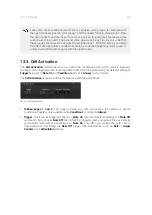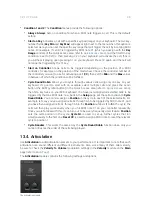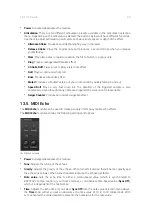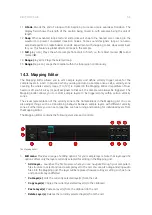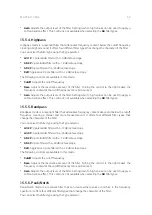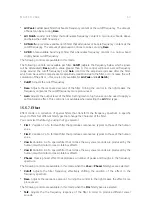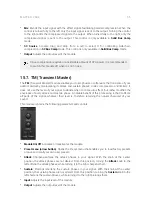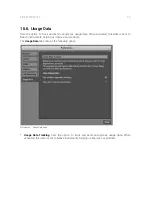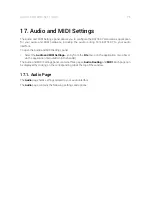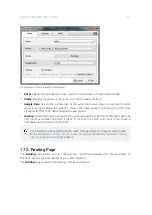
•
LM
: Low-mid frequency band
•
HM
: High-mid frequency band
•
H
: High frequency band
The following controls are available in this mode:
•
Freq
: Adjusts the filter frequency of the respective frequency band.
•
Bell
: Switches the
L
and
H
frequency bands to a bell instead of a shelf filter.
•
Q
: Adjusts the Q factor, or resonance, of the
LM
and
HM
frequency bands. The Q factor
determines the width of the frequency band around the filter frequency that is attenuated or
boosted.
•
Output
: Adjusts the output level of the module.
15.5.2. 3-Band EQ
3-Band EQ mode is a classic parametric equalizer. It offers three flexible frequency bands that can
be used simultaneously.
You can select the frequency band for editing using the Type selector:
•
Band 1
•
Band 2
•
Band 3
The following controls are available in this mode:
•
Freq
: Adjusts the filter frequency of the respective frequency band.
•
BW
: Adjusts the Q factor, or resonance, of the respective frequency band. The Q factor
determines the width of the frequency band around the filter frequency that is attenuated or
boosted.
•
Gain
: Adjusts the output level of the respective frequency band. Setting Gain to high values can
be used to apply a soft saturation effect.
15.5.3. Lowpass
Lowpass mode is a resonant filter that attenuates frequency content above the cutoff frequency,
creating a darker sound. It offers four different filter types that change the character of the filter.
You can select the filter type using the Type selector:
•
Ldr 1P
: 1-pole ladder filter with a -6 dB/octave slope
•
AR 2P
: 2-pole ladder filter with a -12 dB/octave slope
•
AR 4P
: 4-pole filter with a -24 dB/octave slope
•
Daft
: Aggressive 2-pole filter with a -12 dB/octave slope
The following controls are available in this mode:
•
Cutoff
: Adjusts the cutoff frequency.
•
Reso
: Adjusts the resonance amount of the filter. Turning the control to the right makes the
frequency content at the cutoff frequency more pronounced.
MASTER PAGE
61

